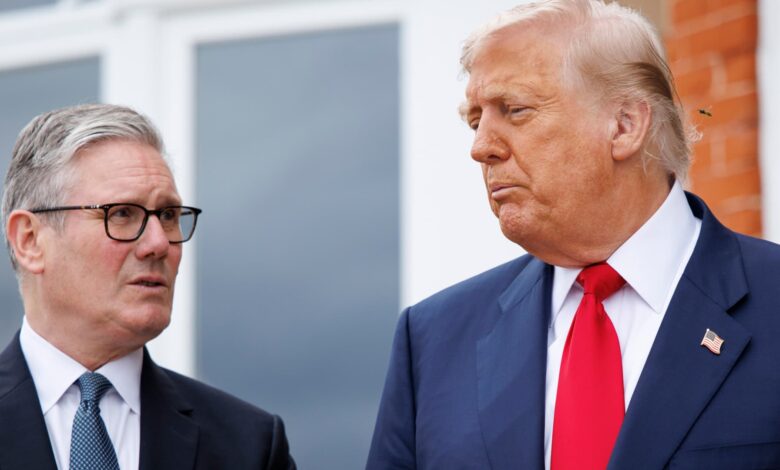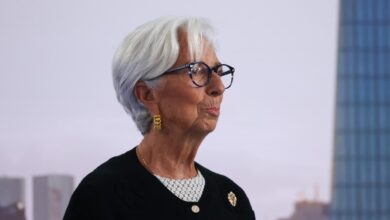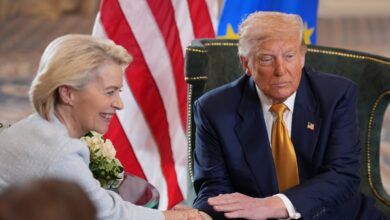The EU-U.S. trade deal could have one unexpected winner: The UK

Keir Starmer, UK prime minister, left, and US President Donald Trump, ahead of their meeting at the Trump Turnberry golf course in Turnberry, Scotland, on Monday, July 28, 2025.
Tolga Akmen/EPA/Bloomberg via Getty Images
As world leaders and economists across Europe digest the news of the EU-U.S. trade agreement, some experts told CNBC that while it may be bad news for the bloc, the deal could serve as an unexpected boost to the U.K.
The European Union is facing a higher 15% tariff rate on its goods imported to the U.S. compared to the 10% levy the U.K. has agreed to.
“In theory, the UK benefits,” Philip Shaw, chief economist at Investec, told CNBC.
“The new EU tariff of 15% means that UK exports to the US have become relatively cheaper, which could boost British trade with the US as American firms buy goods from Britain rather than the EU,” he explained.
U.K. goods would also be cheaper for U.S. consumers due to the lower tariff rate, meaning they may favor British products over those manufactured in the EU, Alex Altmann, partner and head of Lubbock Fine LLP’s German desk, suggested in a note published shortly after the EU-U.S. deal was announced.

“The UK’s lower US tariffs do offer a major incentive for EU companies to shift some of their manufacturing bases to the UK or to expand their existing UK facilities,” he added.
EU-based manufacturers with low profit margins in particular could find the idea of moving to the U.K. attractive to avoid a further squeeze on those margins, Altmann explained, noting that the U.K. has spare manufacturing capacity due to Brexit.
“The UK could be a big indirect winner of this agreement,” Altmann added.
But the benefits to the U.K. are not only linked to the country’s lower tariff rate. Indeed, the EU managing to secure a 15% levy, which is far lower compared to the 30% the bloc was threatened with by U.S. President Donald Trump, could also be a positive for the U.K. according to Investec’s Shaw.
“The EU has escaped from a possible major downturn from a more onerous (i.e. 30%) tariff regime and possibly a series of retaliatory measures between the two trading blocs. Here the UK benefits from its major trading partner averting a recession which could have resulted in a decline in UK exports to the EU,” he said in written comments.
How likely is the boost to the U.K. to materialize?
The EU-U.S. reaching an agreement has also hampered the potential impact, Beth McCall, an international trade lawyer at Dentons told CNBC.
“If the US had proceeded with 30% tariffs against most EU goods, UK goods with a 10% tariff, which is paid by the US importer in most circumstances, could have appeared significantly more attractive,” she said.
McCall noted that the expected difference in the baseline tariff rate, which amounts to just 5%, may still make some U.K. goods more attractive. However, she noted, “this will take time to be seen as existing contracts come to an end and US importers search for imports from countries carrying a lower tariff.”
Questions have been raised about the timeframe for the impact of tariffs being felt around the world has been a frequently debated question. Companies have already flagged that tariffs are expected to weigh on their earnings, and there have been widespread warnings of how the duties could impact economic growth.
But as many details of the trade agreements have yet to be ironed out, their precise exact impact is still unclear. Some of the effects may also take time to be felt, for example rising costs for consumers may only materialize after some time.
Ultimately, both the U.K. and EU are now facing a more difficult environment, McCall said.
“Whether the new rate is 10% or 15%, UK and EU businesses will still face far higher tariffs when exporting to the US than they did three months ago,” she said.





